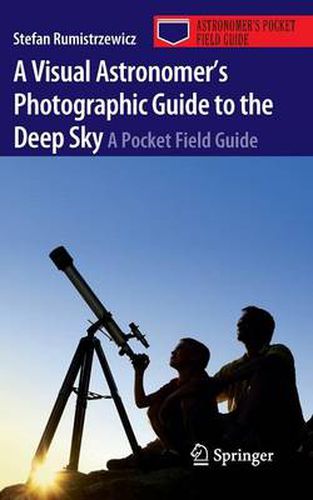Readings Newsletter
Become a Readings Member to make your shopping experience even easier.
Sign in or sign up for free!
You’re not far away from qualifying for FREE standard shipping within Australia
You’ve qualified for FREE standard shipping within Australia
The cart is loading…






This title is printed to order. This book may have been self-published. If so, we cannot guarantee the quality of the content. In the main most books will have gone through the editing process however some may not. We therefore suggest that you be aware of this before ordering this book. If in doubt check either the author or publisher’s details as we are unable to accept any returns unless they are faulty. Please contact us if you have any questions.
Over the last 15 years or so there has been a huge increase in the popularity of astrophotography with the advent of digital SLR cameras and CCD imagers. These have enabled astronomers to take many images and, indeed, check images as they scan the skies. Processing techniques using computer software have also made ‘developing’ these images more accessible to those of us who are ‘chemically challenged!’ And let’s face it - some of the pictures you see these days in magazines, books, and on popular web forums are, frankly, amazing! So, why bother looking through the eyepiece you ask? Well, for one thing, setting up the equipment is quicker. You just take your ‘scope out of the garage or, if you’re lucky enough to own one, open the roof of your observatory, align the 'scope and off you go. If you have an equatorial mount, you’ll still need to roughly polar align, but this really takes only a few moments. The 'imager’ would most likely need to spend more time setting up. This would include very accurate polar alignment (for equatorial mounts), then finding a guide star using his or her finder, checking the software is functioning properly, and c- tinuous monitoring to make sure the alignment is absolutely precise throu- out the imaging run. That said, an imager with a snug ‘obsy’ at the end of the garden will have a quicker time setting up, but then again so will the ‘visual’ observer.
$9.00 standard shipping within Australia
FREE standard shipping within Australia for orders over $100.00
Express & International shipping calculated at checkout
This title is printed to order. This book may have been self-published. If so, we cannot guarantee the quality of the content. In the main most books will have gone through the editing process however some may not. We therefore suggest that you be aware of this before ordering this book. If in doubt check either the author or publisher’s details as we are unable to accept any returns unless they are faulty. Please contact us if you have any questions.
Over the last 15 years or so there has been a huge increase in the popularity of astrophotography with the advent of digital SLR cameras and CCD imagers. These have enabled astronomers to take many images and, indeed, check images as they scan the skies. Processing techniques using computer software have also made ‘developing’ these images more accessible to those of us who are ‘chemically challenged!’ And let’s face it - some of the pictures you see these days in magazines, books, and on popular web forums are, frankly, amazing! So, why bother looking through the eyepiece you ask? Well, for one thing, setting up the equipment is quicker. You just take your ‘scope out of the garage or, if you’re lucky enough to own one, open the roof of your observatory, align the 'scope and off you go. If you have an equatorial mount, you’ll still need to roughly polar align, but this really takes only a few moments. The 'imager’ would most likely need to spend more time setting up. This would include very accurate polar alignment (for equatorial mounts), then finding a guide star using his or her finder, checking the software is functioning properly, and c- tinuous monitoring to make sure the alignment is absolutely precise throu- out the imaging run. That said, an imager with a snug ‘obsy’ at the end of the garden will have a quicker time setting up, but then again so will the ‘visual’ observer.